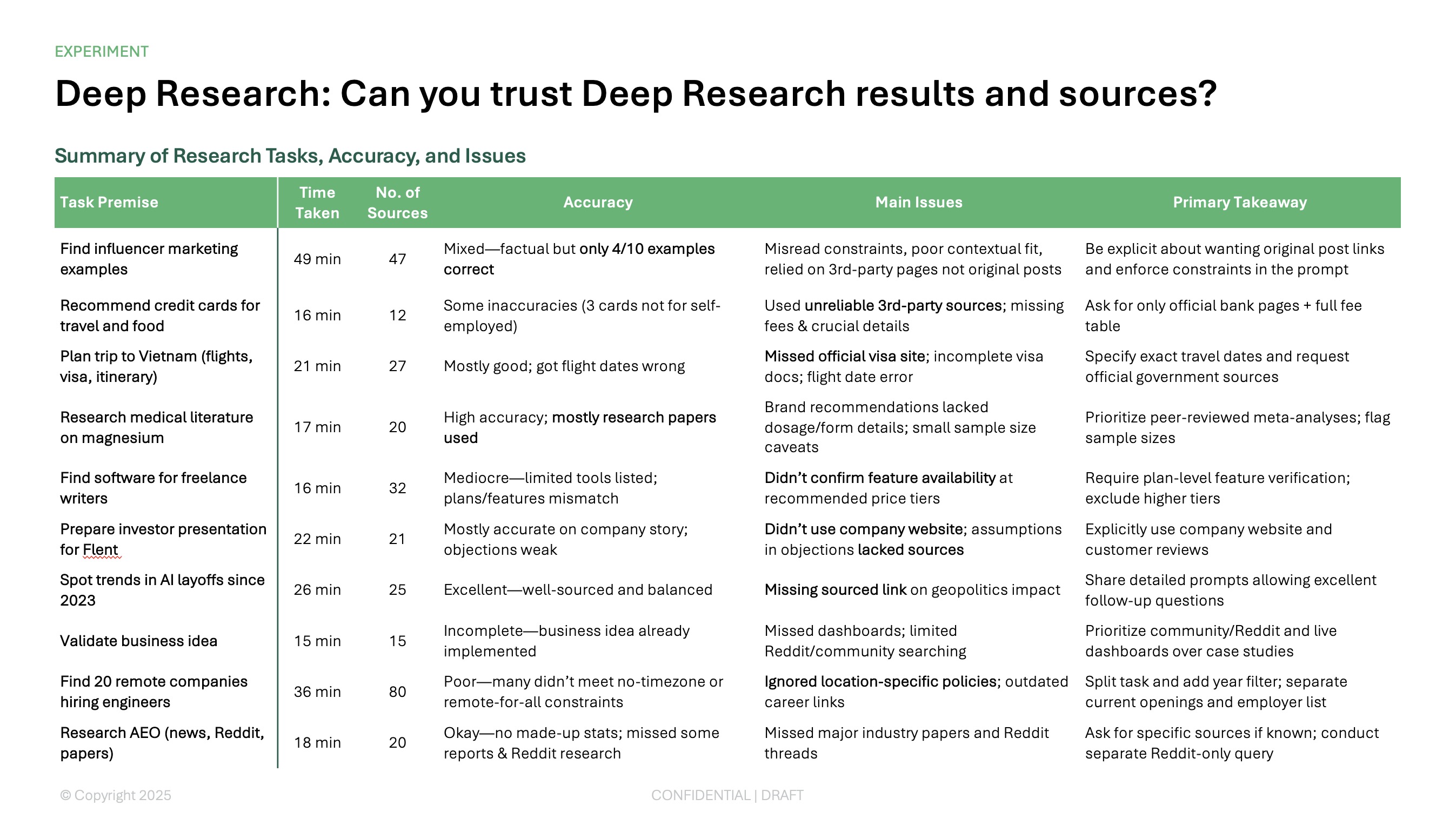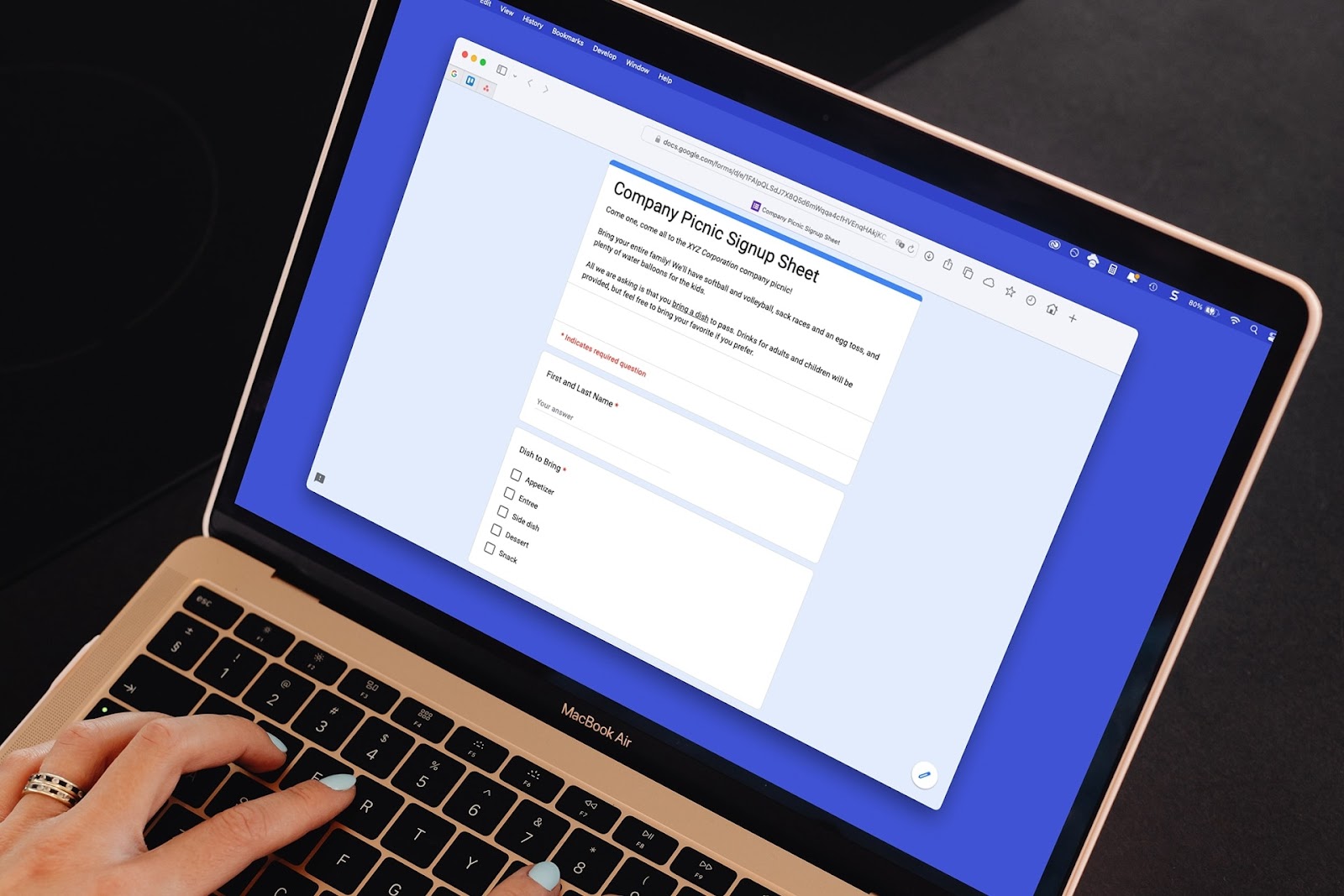Looking for the easiest way to automatically generate slide decks with an API? We tested and reviewed eight of the top presentation APIs to show you how they work and what types of presentations they create.
Whether you are trying to automate an existing slides workflow, making new slides, or adding an integration, we’ve got you covered with in-depth analysis of the best PowerPoint APIs.
{toc}
The best presentation APIs of 2025
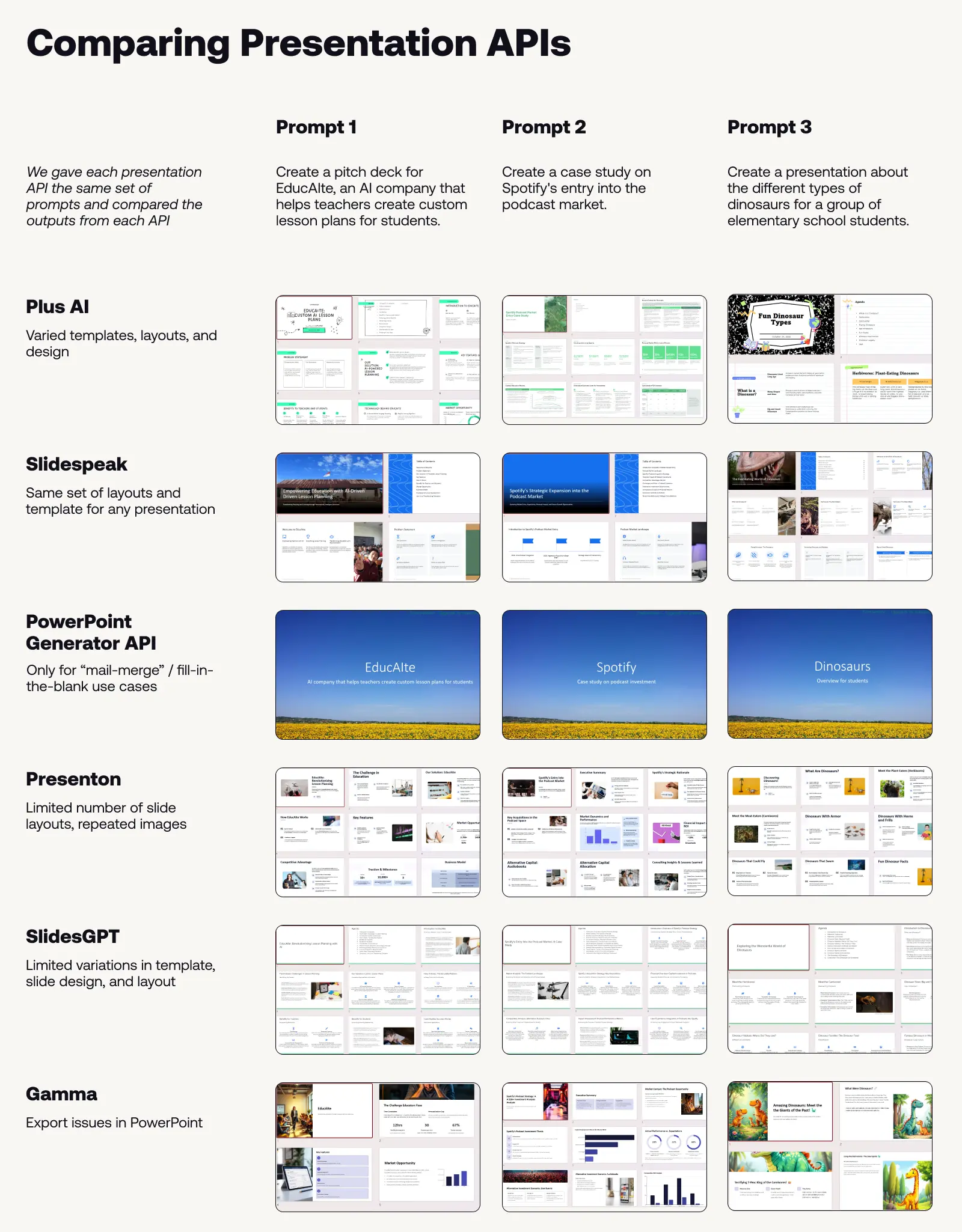
Here’s a quick look at the slides made by each presentation API.
We tested Plus AI, Slidespeak, PowerPoint Generator API, Presenton, SlidesGPT, and Gamma. In addition, we also looked at the Google Slides API and python-pptx.
We found Plus AI had the most diverse set of templates, layouts, and it produced the slides that felt most like “real” slides that could be used right away, with minimal edits. It was also easy to set up and start using it immediately.
How we evaluated the presentation APIs
To test out each presentation API, we signed up for an API account with each service and asked it to generate a presentation using the same set of prompts:
- Prompt 1: Create a pitch deck for EducAIte, an AI company that helps teachers create custom lesson plans for students. Make it look creative but professional and include interesting design elements.
- Prompt 2: Create a case study on Spotify's entry into the podcast market and whether or not they could have better spent the capital on acquisitions on a different business line. Use a consulting style slide template to present the data and insights.
- Prompt 3: Create a presentation about the different types of dinosaurs for a group of elementary school students. Keep it fun and playful.
This allowed us to see the diversity in slide types, templates, and layouts for each tool, as well as their suitability for different types of presentations (a typical business presentation, a presentation with more detailed analysis, and a school presentation).

We then measured each API in three different areas:
- Ease of use
- Content quality
- Layout and design
Based on our tests, here’s how each API performed.
Plus AI
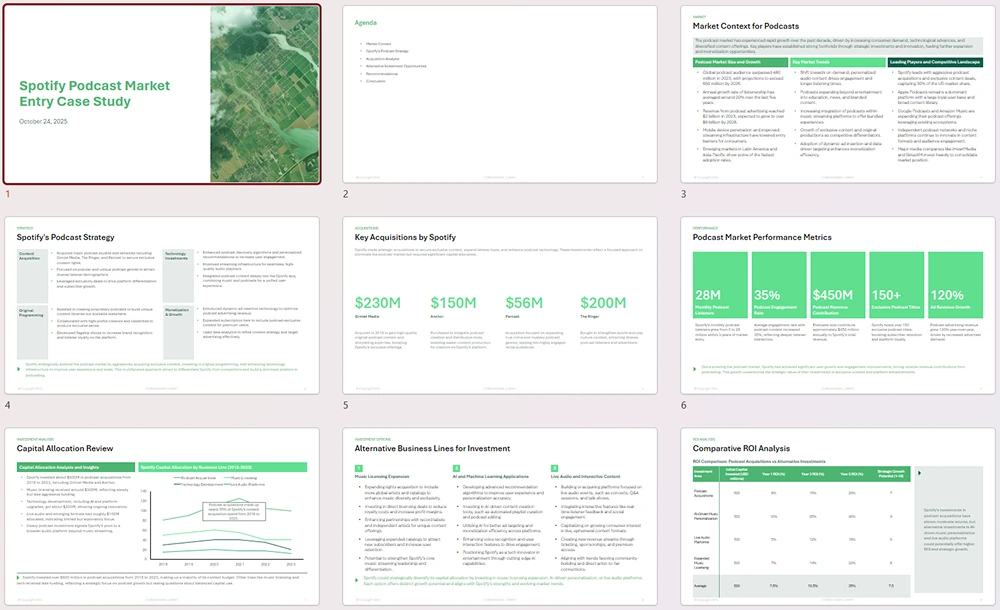
Plus AI’s product focus is professional presentation makers who use PowerPoint and Google Slides. They offer native add-ons for each presentation app, as well as an API that can generate presentations programmatically.
Getting set up with Plus AI’s API is straightforward. You sign up for an account from the home page, request an API key, and use their API documentation to send your first request.
In our examples of three different types of slide decks, it used three different templates to create three distinct visual styles for each presentation. We found the content quality to be very good, and it adjusted the content based on the type of presentation. For users who will be editing the presentations afterwards, we also found the Plus AI slide layouts to be the closest to a ‘standard’ PowerPoint slide in terms of formatting and compatibility with existing slides.
They also advertise the ability to use custom templates when creating presentations via API, which is a key feature for larger customers.
Overall, Plus AI is our top choice for presentation APIs and offers the set of features you’d expect from a slide deck API.
- Ease of use: 5/5. Very easy to set up with Google or Microsoft login and clear API documentation.
- Content quality: 4/5. High-quality, relevant content that adapts well to prompts.
- Layout & design: 5/5. Professional designs that look like ‘standard’ PowerPoint slides.
Slidespeak
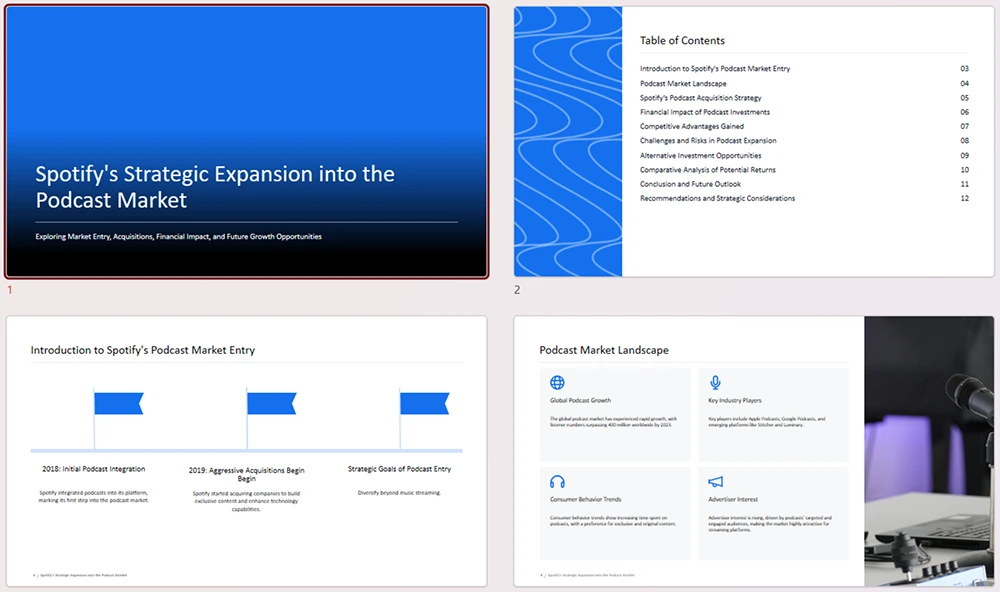
Slidespeak is another AI presentation tool that helps customers convert content into PowerPoint slides. Rather than integrate directly with PowerPoint, they also offer a web-based slide editor.
Using Slidespeak’s API is also quite easy. You can sign up for a Slidespeak account, visit the Developer page and get a key. (Note: Make sure to click through the link on the API docs because the Developer page does not appear in the standard Account settings page).
During our testing of Slidespeak, we found that it created nice slides, but the layouts and slide types looked the same for each type of presentation. This meant the slides matched the first prompt, but they didn’t change when prompted for more detail or for a style better suited for kids.
Slidespeak also advertises the ability to use custom templates, so that may not be a concern depending on how you set up your development environment and integration.
Overall, Slidespeak seems like a solid choice for creating presentations using API.
- Ease of use: 5/5. Simple setup. Good documentation and easy to get API key
- Content quality: 3/5. Content did not always ‘fit’ the page but generally looked good.
- Layout and design: 3/5. Slides and designs are relatively repetitive, do not follow standard presentation design rules
PowerPoint Generator API

PowerPoint Generator API follows a different pattern than Plus AI, Slidespeak, and the other products on this list. It offers less “AI” and requires more set up work.
To use PowerPoint Generator API, you need to have a very detailed template and JSON object that details the content you would like to fill in on every page of the PowerPoint deck. Then, PowerPoint Generator API will fill in the content of each page and export the new PowerPoint file.
This is probably best suited for “mail-merge” style scenarios where you have a long spreadsheet of cells that need to be placed in specific boxes in a presentation, but it does not offer AI content generation or the ability to create new slides for you.
In our testing, we verified that the tool works as intended, but we were not able to try generating a full presentation without an existing template.
- Ease of use: 2/5. Requires significant setup time with templates and code.
- Content quality: N/A. No content generation capabilities
- Layout and design: N/A. No slide design capabilities
Presenton
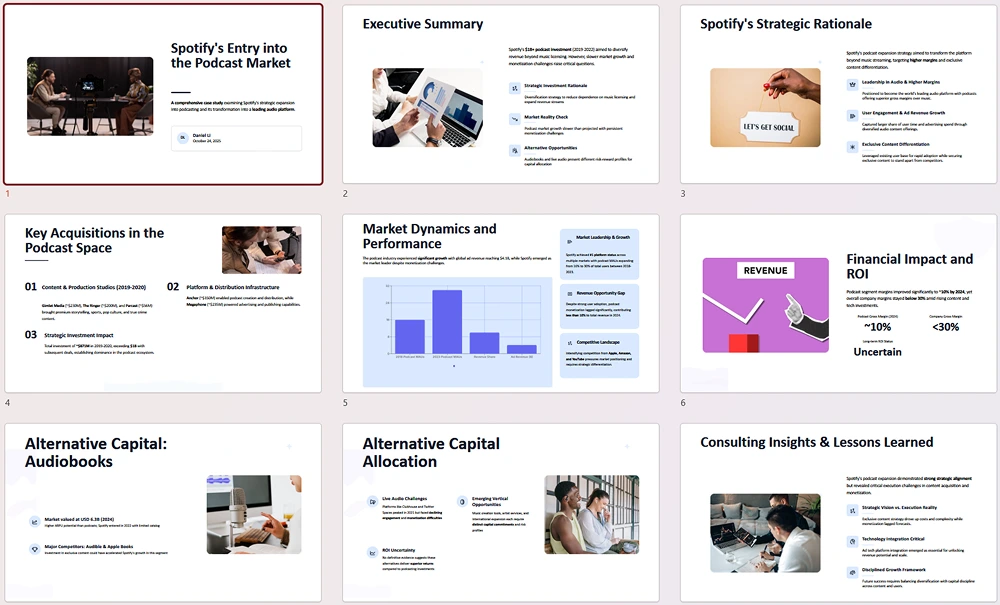
Presenton is an interesting addition to the list because it is open source, so you can self-host and create custom deployments. For example, Presenton makes it easy to switch between the Ollama, OpenAI, Google, and Anthropic models.
If you are going to be self-hosting, this can require more setup, but you can also use Presenton’s cloud-hosted option to quickly get an API key and try out the product.
After sending the three prompts to Presenton, we received very similar presentations each time. They had the same title card with a new image. Nearly every slide had the same format and amount of text. The images were nice but not always relevant.
There were some more ‘advanced’ slides with charts and tables, but these had some formatting issues that would need to be cleaned up before they could be used.
Overall, this was a good open source option, and it seems like the opportunities to extend the existing platform or customize additional parameters could be an important selling point for certain customers.
- Ease of use: 3/5. Easy setup with hosted solution, though self-hosting requires more setup.
- Content quality: 3/5. Content looks good and fits the slide designs. Advanced slide types had formatting issues.
- Layout and design: 2/5. Layouts and designs were repetitive.
SlidesGPT

SlidesGPT is another AI presentation tool that can help customers make PowerPoint or Google Slides presentations directly, or offers an API product to generate slides programmatically.
It was very easy to get started with SlidesGPT, and it’s nice how their website allows you to try out their product before you sign up.
Overall, the variety of slides and designs from the SlidesGPT-created slides were simpler than the other AI tools. The content did not look as good on the page, and there were only a couple of different “slide type” variants.
- Ease of use: 5/5. Very easy to try and get started.
- Content quality: 2/5. Simple content that did not always “fit” the slide.
- Layout and design: 2/5. Limited number of slide designs and layouts.
Gamma

Gamma is an AI presentation tool that helps customers replace PowerPoint with a more flexible app that can assist with AI content generation.
Gamma recently released an update which allows users to generate content via their API endpoints. It was easy to get started with Gamma and get an API key.
After testing it out with a few different prompts, it was also nice to see the variety of slide types across the tool.
The main issue, however, was that when trying to access the presentations as PowerPoint files, they often had formatting issues because the underlying “Gammas” were not formatted or sized to be slides.
Overall, these presentations looked good as native “Gamma” presentations, but when exported to PowerPoint, they had layout and formatting issues.
- Ease of use: 5/5. Very easy to get started and set up.
- Content quality: 4/5. Content generally looked good, but complex business analysis was still lacking.
- Layout and design: 3/5. Presentations looked nice in the Gamma app but exports suffered from formatting issues.
Other tools
In addition to these 6 APIs, we also researched two other presentation tools for developers, the Google Slides API and python-pptx.
Google Slides API
The Google Slides API is a lower level API that requires a much more involved setup and development process. To build an application or integration with the Google Slides API, you would also need to set up a new Google Cloud Project, Google OAuth, and a much deeper understanding of how slides are built and structured.
Depending on how you intend to use the Google Slides API, it could be a more involved version of setting up the PowerPoint Generator API we mentioned earlier, where you have template slides that are filled in with the help of a content file. Or it could involve deeper levels of automation and slide design.
If you need something quick and easy, we’d recommend starting with one of the options above (which is probably actually built on either the underlying Google Slides or PowerPoint API).
Python-PPTX
The python-pptx library is an open source library that gives developers similar capabilities for PowerPoint. It allows you to read, update, and create pptx files using a set of tools for add slides, adding text boxes, adding images, adding shapes, etc.
Like with the Google Slides API, it requires much more setup than using one of the APIs above. In contrast to the Google Slides API, however, it does not require all of the integration work with a new Google Cloud project and Google auth to get started with making a new presentation, so it’s much easier to get started, and the AI tools like ChatGPT and Claude can actually make presentations using this library.
If you only need simple presentations with titles and a little bit of content, you can probably get started with python-pptx and an AI coding agent. However, if you need more complex slides, it’s probably better to start with an API like Plus AI.
Conclusion
While there are a number of different AI tools for creating presentations, only a handful of them offer the ability to create presentations using an AI.
After testing eight different presentation tools, Plus AI stands out as the best overall solution for automated slide generation thanks to its professional templates, high content quality, and PowerPoint compatibility.
For developers and users who need less AI and more fine-grain control of every presentation, python-pptx and the Google Slides API may also be good solutions.
FAQs
How can I create presentations using an API? To create a presentation using an API, decide what type of input you can provide to the API and what types of output you are expecting. If you want to transform existing documents and prompts into slides, try using an API like Plus AI to convert your content into polished presentations.
What is the easiest-to-use presentation API? The best presentation APIs allow you to send any type of content to an API and get a presentation in your desired format, without a complicated setup process. Try Plus AI if you are looking for a solution that can create native PowerPoint and Google Slides presentations.
Which presentation API works best for PowerPoint and Google Slides? Plus AI is designed and built by professional presentation creators who work in PowerPoint and Google Slides every day. It produces slides that are fully compatible with PowerPoint and Google Slides and look like the slides you would make on a regular day-to-day basis.
What is the best way to automate slide deck creation via API? When you are planning out a new slide deck creation workflow, think about the types of inputs you will be providing to the API and the types of outputs that you would expect to receive. If you want to share detailed, structured data on every piece of content for each slide, try a tool like python-pptx. If you want to share high level text prompts or documents, try a tool like Plus AI.


